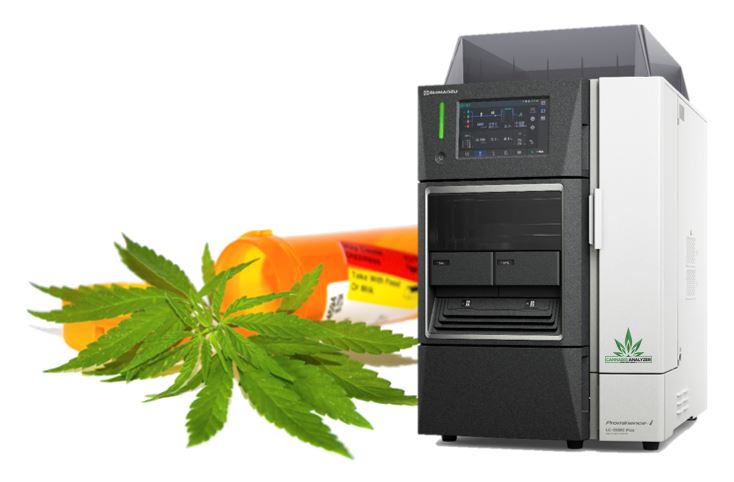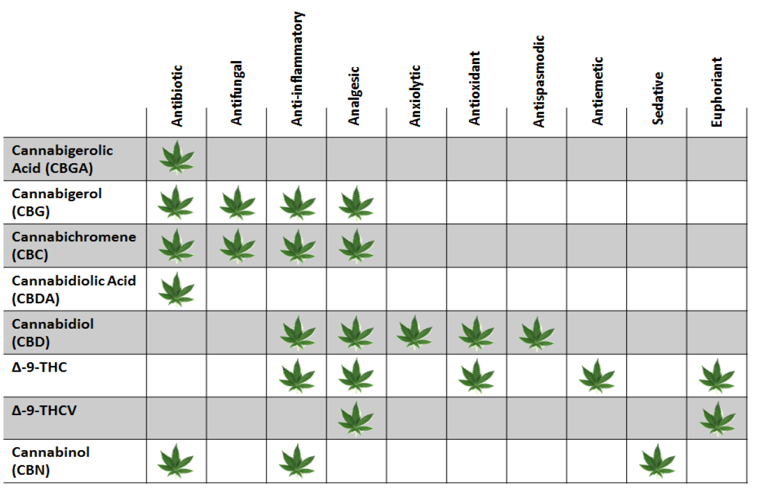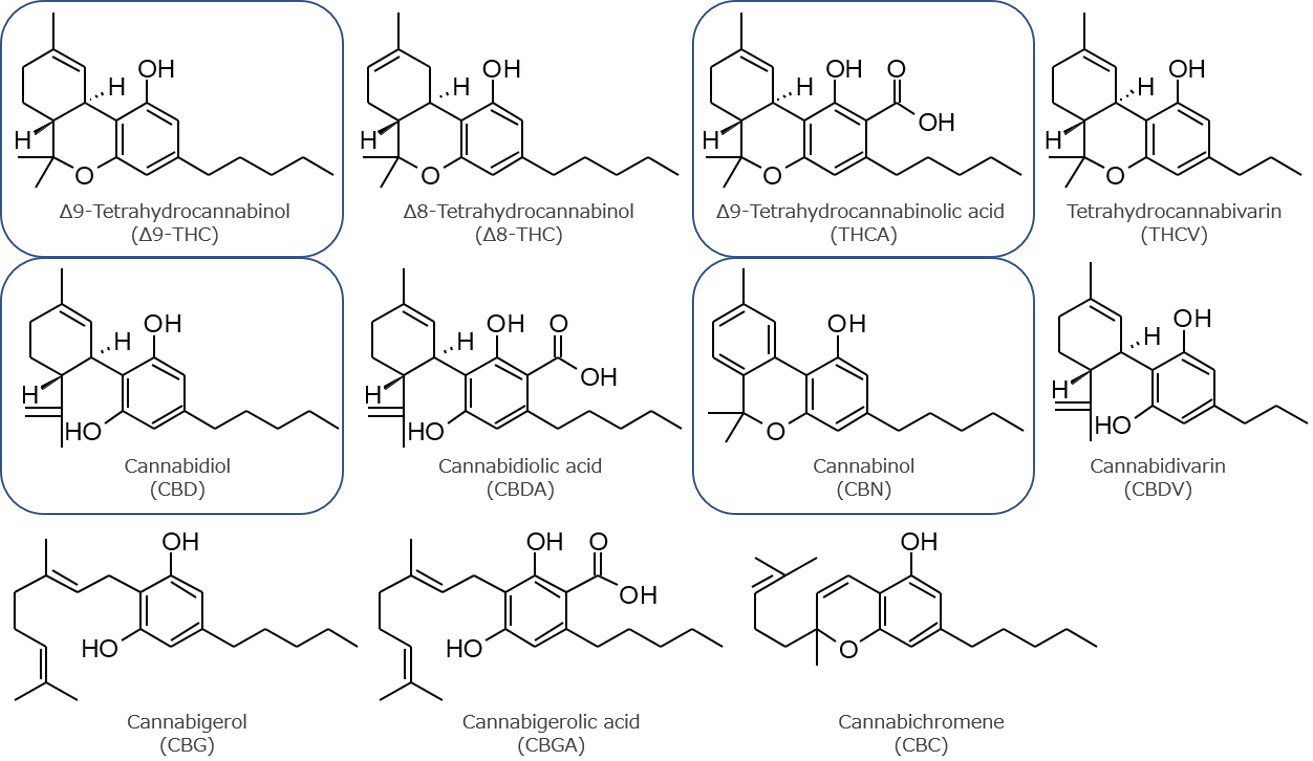Potency Testing
Potency Testing by HPLC

Cannabis contains more than 500 unique compounds, including over 80 chemical alkaloids known as cannabinoids. The sticky trichomes of the budding plant produce the highest concentrations. THC does not occur naturally in cannabisplants. THC-A is the natural, non-psychoactive, carboxylic acid form of THC. It is rapidly converted to THC upon smoking or heating. The premium products sold in medicinal cannabis dispensaries are typically those with high THC concentrations, however, it’s THC-A and the other non-psychoactive “CBx” cannabinoids, such as CBD that have been reported to reduce convulsions, inflammation, nausea and anxiety, and even eradicate tumors in some patients. CBN, only slightly psychoactive, is a degradation byproduct of THC and it is elevated when cannabis is poorly stored.

Cannabinoids and pharmacological characteristics [S. Kuzdzal et al., A Closer Look at the Emerging Cannabis Industry, Shimadzu Journal, Third Edition: December 2017 ]
Potency Testing in hemp products by HPLC
CBD-rich oil has become increasingly popular and is administered via sublingual drops, gel capsules or as a topical ointment. The main source of CBD-rich oil is industrial hemp. While “cannabis” is the name of the plant itself, “marijuana”, in its correct use, refers only to the leaves and flowering portions of the plant that contain a wide array of cannabinoids, including more than 0.3% of the psychoactive compound THC. Hemp on the other hand describes the sterilized seeds, stems, stalks and roots of cannabis plants with no more than 0.3 % THC. CBD oil produced from these seeds and roots exhibits therapeutic benefits without the mind-altering “high” produced by THC.
Simplified Cannabis Potency Testing by HPLC-UV

QC testing for cannabinoids is essential for the accurate labeling of cannabis and hemp products. The term “potency” is normally reserved for the quantitation of the major cannabinoids, namely THCA, THC, CBD, and CBN.
HPLC has emerged as the gold standard for potency determinations, as separation and detection of the cannabinoids is done without causing any decomposition of the naturally abundant THCA.This acid form undergoes decarboxylation to THC under the influence of heat and light. Therefore GC determinations offer only a sum-parameter of THCA and THC. This application note describes the analysis of 11 cannabinoids in a simple 10 min HPLC-UV assay.


